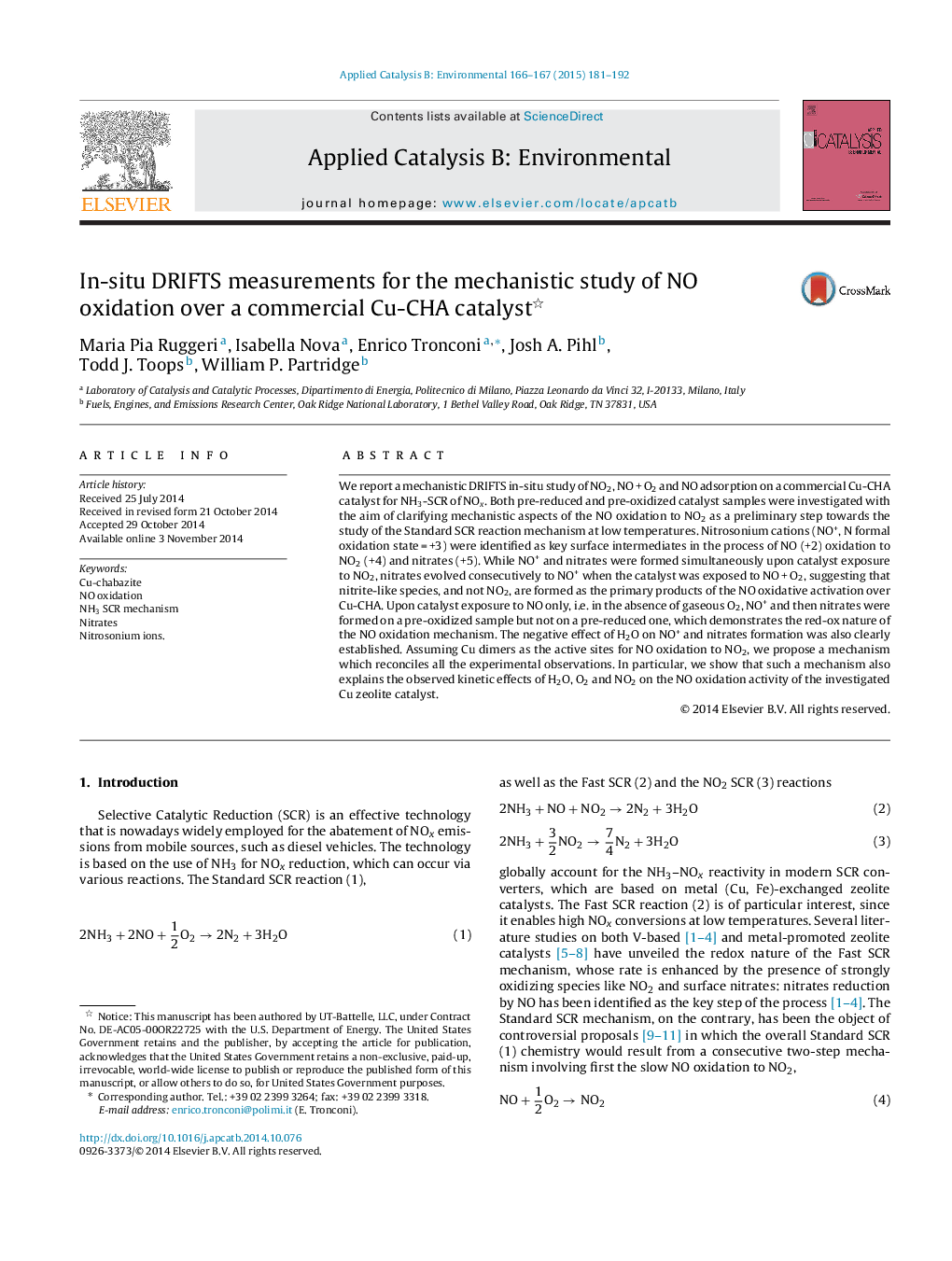| Article ID | Journal | Published Year | Pages | File Type |
|---|---|---|---|---|
| 45709 | Applied Catalysis B: Environmental | 2015 | 12 Pages |
•NO oxidation mechanism on Cu-CHA is investigated by in situ DRIFT spectroscopy.•NOx feed to pre-oxidized/pre-reduced samples reveals redox nature of the process.•NO+ is identified as key intermediate in NO oxidation and nitrates formation.•A redox mechanism accounting for H2O effect and nitrates formation is proposed.
We report a mechanistic DRIFTS in-situ study of NO2, NO + O2 and NO adsorption on a commercial Cu-CHA catalyst for NH3-SCR of NOx. Both pre-reduced and pre-oxidized catalyst samples were investigated with the aim of clarifying mechanistic aspects of the NO oxidation to NO2 as a preliminary step towards the study of the Standard SCR reaction mechanism at low temperatures. Nitrosonium cations (NO+, N formal oxidation state = +3) were identified as key surface intermediates in the process of NO (+2) oxidation to NO2 (+4) and nitrates (+5). While NO+ and nitrates were formed simultaneously upon catalyst exposure to NO2, nitrates evolved consecutively to NO+ when the catalyst was exposed to NO + O2, suggesting that nitrite-like species, and not NO2, are formed as the primary products of the NO oxidative activation over Cu-CHA. Upon catalyst exposure to NO only, i.e. in the absence of gaseous O2, NO+ and then nitrates were formed on a pre-oxidized sample but not on a pre-reduced one, which demonstrates the red-ox nature of the NO oxidation mechanism. The negative effect of H2O on NO+ and nitrates formation was also clearly established. Assuming Cu dimers as the active sites for NO oxidation to NO2, we propose a mechanism which reconciles all the experimental observations. In particular, we show that such a mechanism also explains the observed kinetic effects of H2O, O2 and NO2 on the NO oxidation activity of the investigated Cu zeolite catalyst.
Graphical abstractFigure optionsDownload full-size imageDownload as PowerPoint slide
